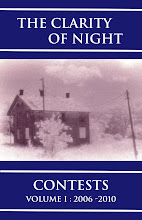When psychiatric nurse Marlin Marynick set-out to meet
Charles Manson at the Corcoran Prison in California
I know it sounds
crazy, but I have best friends in prison all over the USA
My thoughts: It’s possible that we all have friends that
have this kind of dangerous potential; I just don’t seek them out—not
intentionally anyway.
But what about those small-time convicted criminals with a
God-given talent at sketching, painting, or sculpting? How do they bring
attention to their artwork? Here’s a link to the University of Michigan
What do you think brings value to art?
More to come regarding the mentally-ill prisoners in my life
and from Marynick’s “Charles Manson Now.”
**********
Note: The above water color painting is not part of the Michigan Exhibit; however, it is from the private collection of aMichigan
**********
Addendum: The Michigan art patron requested that I remove the water color painting. I'm not sure why. Whether it's because I'm "devaluing the art," or because there's underlying forces at play... so, as a replacement, I've chosen the only prisoner artwork that I've ever purchased: Insect Order Mantodea.
Note: The above water color painting is not part of the Michigan Exhibit; however, it is from the private collection of a
**********
Addendum: The Michigan art patron requested that I remove the water color painting. I'm not sure why. Whether it's because I'm "devaluing the art," or because there's underlying forces at play... so, as a replacement, I've chosen the only prisoner artwork that I've ever purchased: Insect Order Mantodea.






8 comments:
I know what brings the MOST value to art--the death of the artist. Before that the ability to grab an audience and hold it captive even after they have long walked away from the visual of the piece.
Interesting. While I can separate a great piece of art from its source, I don’t think I could have a serial killer’s work in my home.
Interesting post..and question. You might like this site
Lots of social commentary and great photography from prisons all over the world.
I mostly try to support artists who haven't hurt anyone. that I know of!
When it's allsaid and done the artist is a human being that has thoughts feelings, emotions, regrets, hopes and dreams, whether in prison or not an artist is expressing something.
I lent the piece in hopes of bringing attention to the isolation issue Solitary Watch has posted the a PDF of FAQ on solitary/isolation/ADSEG/the SHU whatever they want to call it Tommy is the longest held Federal prisoner of this torture over 3 decades
Being convicted of 4 seperate murders the death penalty should be imposed asap. Huck
Hucks gang agrees with Huck. Save the tax payers some money and start putting these asssholes to death. Fuck their art work. Give them the same treatment they gave their victims. JR. Hoping to see you at the OX bow. HG
Captive artists.
Luckily we not the captive audience.
Post a Comment